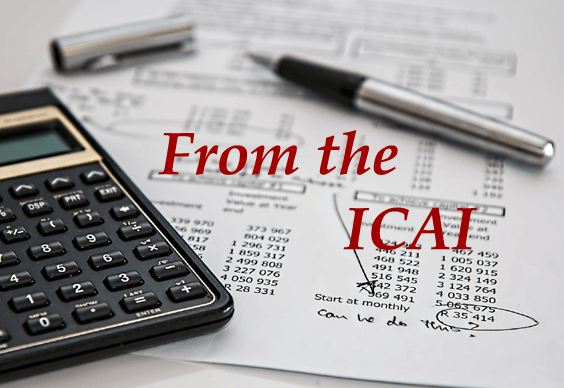BOJ ends negative interest rate regime:
Economists say it’s more a reaction to change in Japanese economy, more hike likely
March 21, 2024
After the Bank of Japan (BoJ) increased its key interest rate for the first time in 17 years from -0.1 per cent to a range of 0- 0.1 per cent, economists and experts said that the next policy rate hike is likely to occur in the second half of 2025 and it will depend largely on economic and financial markets in Japan and abroad. Sunny Agrawal, Head of Fundamental Equity Research, SBI Securities Ltd, said, “Going forward, Japanese rates are likely to stay very low for the foreseeable future, despite the fact that interest rates are in positive territory. Further rate hikes will not be at aggressive pace and hence immediately there is no sign of worry for global investors.”
S&P Global Market Intelligence also reiterated that even if BOJ plans to maintain buffers in case the economy decelerates and inflation weakens, the next policy rate hike is likely to occur in the second half of 2025 in line with improving domestic and external demand.
Japan had, in 2016, cut the rate below zero in an attempt to stimulate the country’s stagnating economy. In cases where negative rates are in force, people have to pay to deposit money in a bank. This has been used by several countries as a way of encouraging people to spend their money rather than putting it in a bank.
As part of its exit from NIRP, the BOJ also announced that it would abandon its yield curve control (YCC) policy, which was introduced in 2016, and saw it buying Japanese government bonds to control interest rates. YCC has been criticised for distorting markets by keeping long-term interest rates from rising. In a statement, the BOJ said that it will keep buying “broadly the same amount” of government bonds as before and ramp up purchases in case yields rise rapidly.
Naohiko Baba, Managing Director, Chief Japan Economist and Head of Japan Research, Barclays, said, “The BoJ exited both NIRP and YCC, terminated ETF/J-REIT purchases, scrapped its inflation-overshooting commitment and rewrote its forward guidance, in line with our expectations. The NIRP exit should have little impact on the economy and our base case remains a further rate hike to 0.25 per cent in July.”
Why an end to the negative interest rate?
The decision to finally end negative interest rates is said to be the wage arbitration which is currently taking place between employers and unions and major corporations increasing wages for their workers, Bank of Japan Governor Kazuo Ueda had stated. A BBC report stated that earlier this month, Japan’s biggest companies agreed to raise salaries by 5.28 per cent, which is the biggest wage hike in more than three decades.
“The Bank of Japan decided to end its negative short-term policy rate, which started in January 2016, and its yield curve control scheme, introduced in September in 2016. The policy rate hike is the first since July 2006. Even so, the bank will probably maintain its ultra-loose monetary policy over the near term. The Bank of Japan’s decision to make the policy changes in March was not surprising. Even though negotiations for smaller unions are still in the early stages, solid results of wage negotiations, with increases outpacing inflation in a broad range of unions, suggested a move in March was becoming more likely than before,” said S&P Global Market Intelligence.
Deepak Agrawal, CIO – Debt, Kotak Mutual Fund, said, “Over the last year or so, though Japanese inflation has been easing off, there have been signs of demand led inflation. Most importantly, Japanese corporates were seen to have given pay rises to its employees to the tune of 5-6 per cent and higher in some cases. To put this in perspective, many of these are the highest corporate wage increases in over 3-4 decades. Robust wage growth and improvement in the local investment environment would have provided the confidence for BoJ to reverse the ultra-loose monetary policy.”
Santosh Meena, Head of Research, Swastika Investmart Ltd, said, “Japan stands alone as the world grapples with rising interest rates. The BoJ defied the global trend by raising rates for the first time in 17 years, signaling an end to its era of negative rates. This shift comes as Japan experiences a flicker of inflation after years of deflation, along with signs of economic resilience.”
Going forward
Looking ahead, the BOJ has signalled that there will not be further rate hikes for now as it anticipates that “accommodative financial conditions will be maintained for the time being”.
Sunny Agrawal from SBI Securities Ltd, said, “The hike in rate may impact the global financial markets as Japan was the cheap source of funding for global investors. FII flows, especially from Japanese investors, may get hurt as carry trades will be unwound. It will lead to appreciation of Yen against dollar and will lead to higher landed cost of Indian imports.”
Per S&P Global Market Intelligence, while the bank’s decisions will contribute to improving the functioning of financial markets, the impact on the real economy is likely to be limited. “The outlooks for the near-term policy rate and purchases of Japanese government bonds suggest that significant changes in lending rates are unlikely, although the bank’s moves could change households’ preferences regarding mortgage loan types. Not only will the bank keep purchasing Japanese government bonds, but it is also unlikely to start reducing its holdings of Japanese government bonds (which is over 50% of outstanding Japanese government bonds) anytime soon,” it said.
Meanwhile, Naohiko Baba from Barclays, also stated, “Any impact on the economy from the NIRP exit should be quite limited. Instead, we believe the BoJ should be focused primarily on the smooth functioning of the new current account deposit system and JGB buying scheme. In this sense, it should not take long to gauge the effects of the NIRP exit.”
[The Financial Express]

